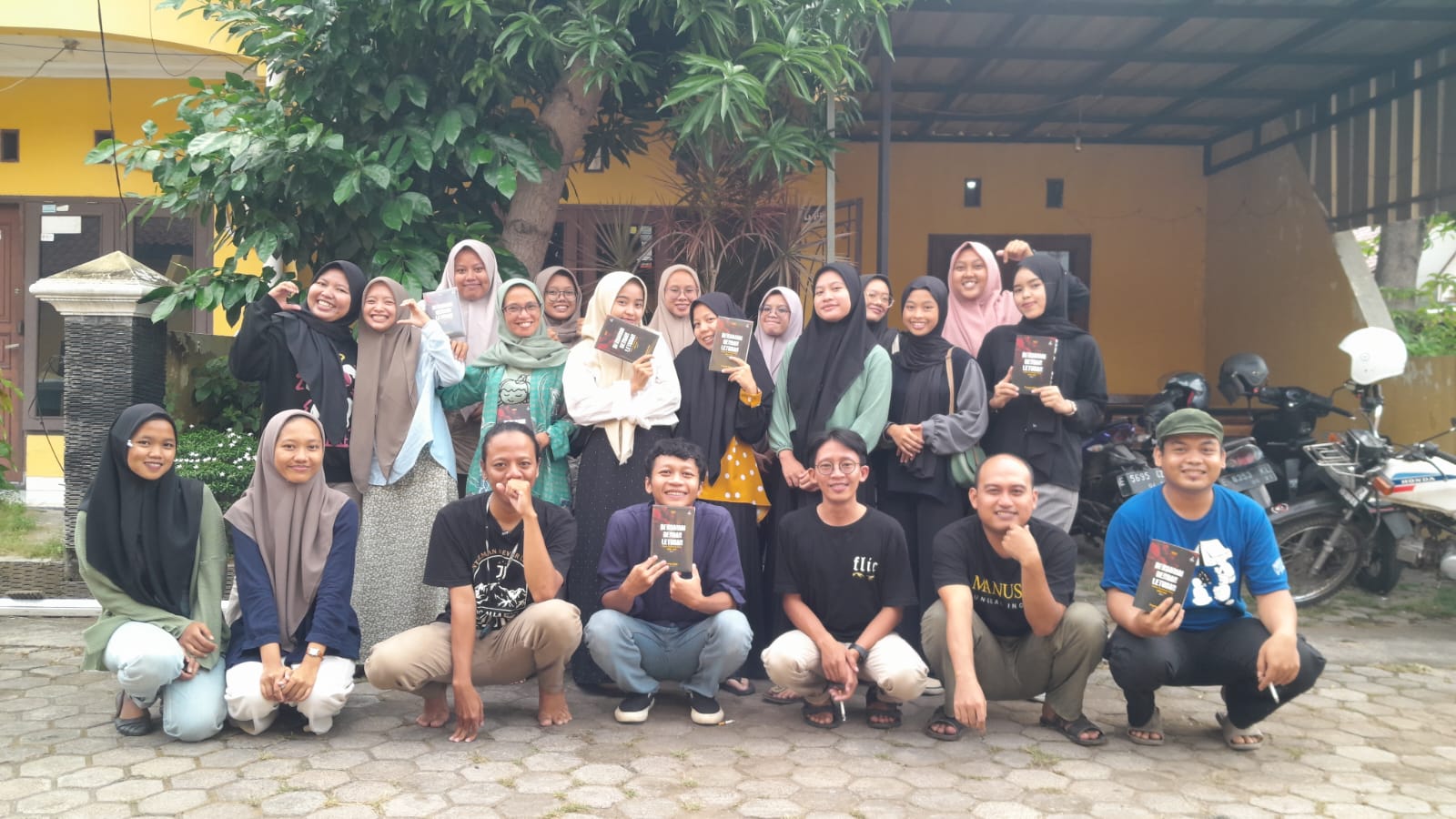Reporter: Ahmad Hadid
The discussion series of Keprapag Maskulinitas was held again on May 24, 2024, at the Umah Ramah office. This third edition of the discussion discussed masculinity in the novel “Berdamai dengan Letusan Jilid 1” (Make Peace with Eruption Volume 1). The author, Prasetyo Aditya, is present as resource person and keynote speaker of the discussion.
“The main character in this novel, Lahar Bara, is a tough, courageous, and conquering figure who was born of a masculine mentality. Following the successful evacuation of a deceased person that had entered Mount Merapi’s crater, the name Lahar gained widespread attention. In 2015, the television channel Kick Andy selected the inspirational tale,” explained the resource person.
Prasetyo Aditya, also known as Bondit, explained that Lahar is a person who lives in a patriarchal society, just like men do in general. A man is constructed to be masculine.
“Lahar was raised in a patriarchal farming society where men are expected to fulfill specific roles, such being the breadwinners and sexually aggressive. These personas shape Lahar’s bold, resilient, domineering, and never-say-die attitude,” he said.
Lahar’s intensely masculine traits have the potential to be harmful as well. In addition to his heroic act during the deceased body’s evacuation from the Merapi crater, Lahar frequently positions himself as a conqueror in his relationships with women.
“This book reveals that he is dating 73 different women. Lahar believes that women are easily tricked by men’s sweet remarks,” he said.
Bondit also tells the twists and turns of Lahar’s life and his hypermasculinity. He added that it was not out of the question that there were more men out there who were similar to Lahar.
“All men in patriarchal culture have the potential to be like that, because men are culturally constructed to be masculine. However, we, as men need to realize that being overly masculine can be harmful and lead to violence. Therefore, I hope that many men will take part in this kind of discussion,” he concluded. []
This article was translated by Napol Riel.
